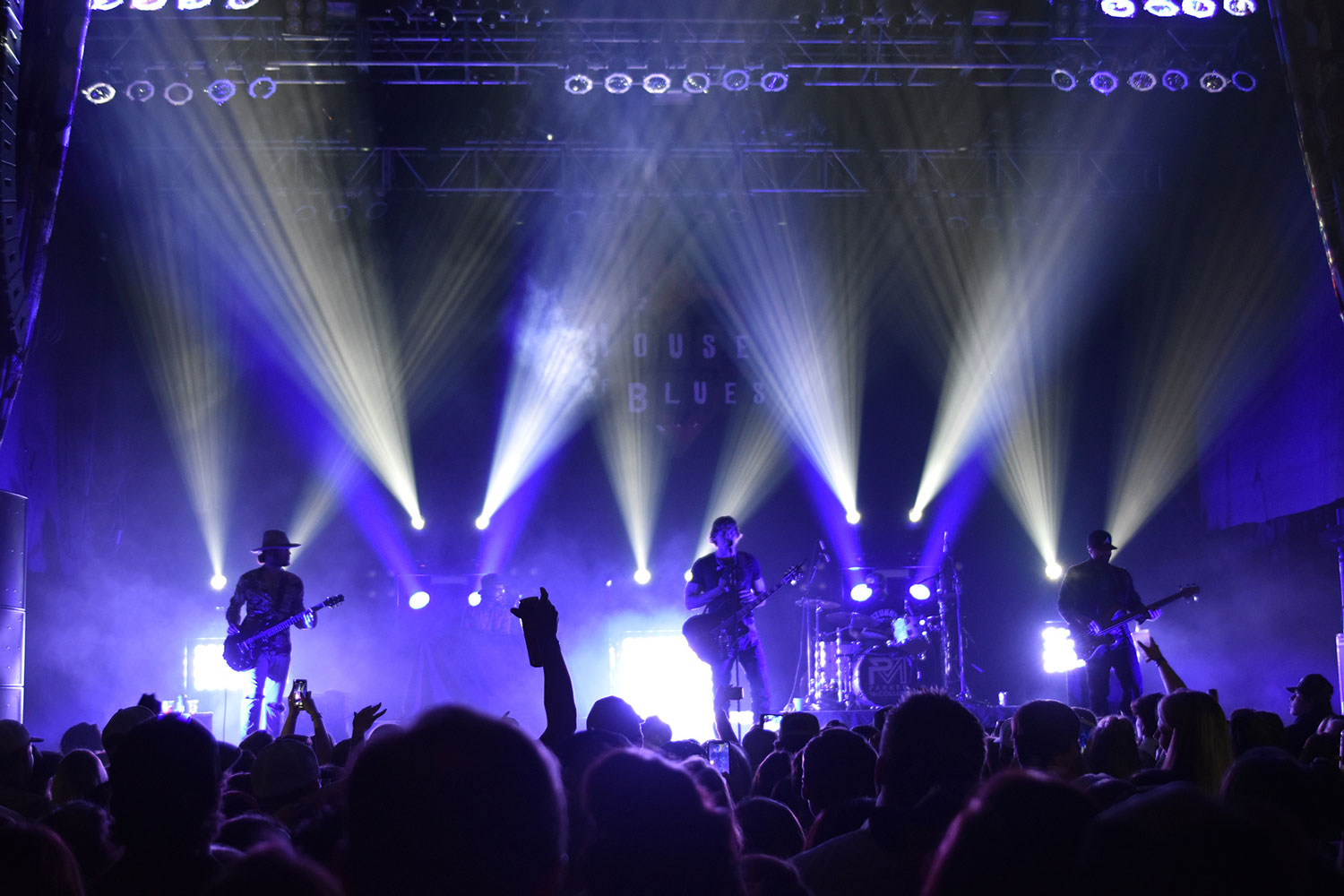Chauvet supports the Limestone Kid
- Details

December marked another milestone, when he performed for sold-out crowds at the House of Blues in Dallas and Houston. Supporting him at those shows was a lightshow designed by Richard ‘Wookie’ Whitley and Josh Peikert that featured a collection of Chauvet Professional fixtures, supplied by Hoopty Lights.
Run by lighting director Jarret Reynolds, the lightshow for McCollum’s Dallas and Houston performances was on five 45” x 30” carts, three of which were 4.5’ tall, while two were 6.5’. A pair of Rogue RH1 Hybrids was mounted on the top of each cart. The taller carts also had two Rogue R2 Wash fixtures under the Hybrid units and STRIKE 4 multi-formatted fixtures attached to each of their sides.
Positioned behind the drum and keyboard risers, the taller carts allowed light from the Rogue and STRIKE units to be shot over the performers on stage. This made it easier for the designers to generate added excitement with aerial effects.
All three of the shorter carts, which were arranged with the drum and keyboard risers across the upstage deck, had Nexus 4 x 4 panels positioned on them. The centre cart had four panels configured in a square, while the two outer carts had two panels side by side. The Nexus panels on these carts created an attractive wall of light across the back of the stage, which helped to dramatize the performance and focus attention on McCollum.
“I like the punch of the RH1 Hybrids,” says Whitley. “It doesn’t matter if you’re talking beam, spot or wash, they cut through great for awesome looks and effects, even with the zoom at full. I love the saturated colours I can get out of the R2 Washes - and the zoom is outstanding.”
The Nexus panels also were essential to achieving the designers’ shared vision for McCollum’s show, now - and in the future. “When we designed this, we wanted to have simple, but bold looks in the front of the show, which made Nexus a natural,” said Peikert.
(Jim Evans)
















